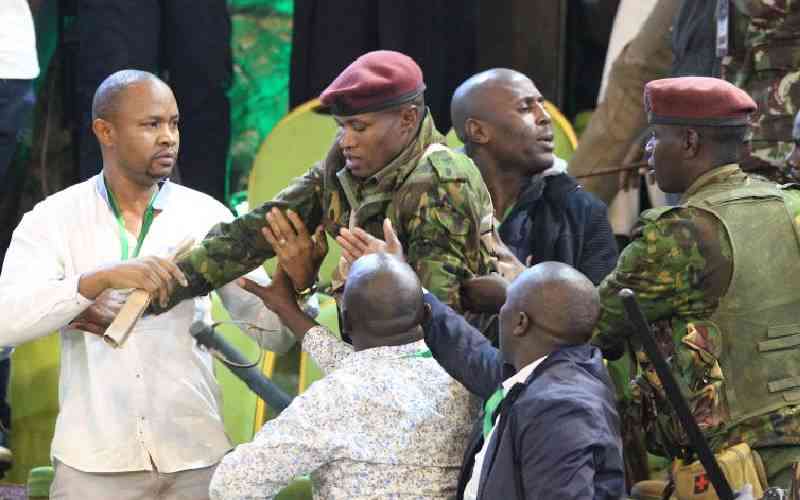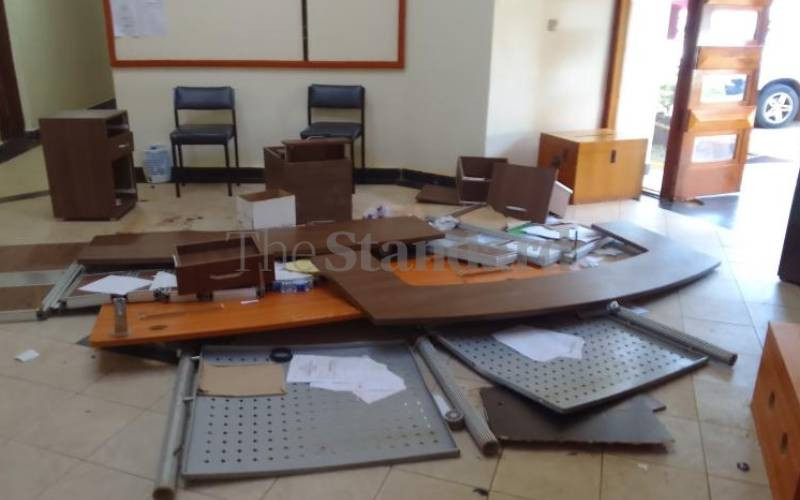The August 24 population census will be an election before the official General Election. The Good Book tells us that King David conducted a census of the people of Israel. David was motivated by pride; he wanted to know how many subjects he rules over, how many warriors could handle a sword for battle, how strong his economy and how big his labour force was. It was an exercise in savoring power. In fact the Bible tells us that it was Satan himself who caused David to undertake the census.
In Kenya, 2,139 years later we are also about to be counted, just like the Israelites. But unlike David’s census, which was about a numeric consolidation for power, ours is about numeric fragmentation for power. The census is an exercise in tribal tallying. The many little ‘Ethnic King Davids’ want to know how strong their numbers, how big their voting block.
The Kikuyu David is eager to see if he is still on top of the political score board. The Luo and Kalenjin Davids are keen to determine how much their numbers have grown, and if they have overtaken the populous Luhya. Further than that, it will determine with whom they will have to enter into a political marriage in order to stand the chance to rule.
Historically, ethnic block formation was truly and firmly established in 2007. By then, many lessons had been learnt from the Moi and post-Moi election eras. Three of the main ethnic groups (Luhya, Kalenjin and Luo) got together under the Orange Democratic Movement (ODM) pitting Raila Odinga against the incumbent, Mwai Kibaki who was backed by the Kikuyu in the Party of National Unity. The formation of ethnic coalitions is still an imperative for 2022. But there are two new dynamics that come with this year’s census.
The first is that the outcome of the census will be as contestedas election results. It will be the most politically charged censussince 1963. ‘Post-census’ tension will be fuelled by allegations of ‘rigging,’ that is the deflation of some ethnic groups numbers, and the inflation of others. This is because of three things: the bearing of the numbers on the actual elections, the leverage the numbers provide in coalition formation and how the announced figures will affect voter psychology.
Average birth
The second is the Somali factor. This will necessitate a new formula for political calculation. Here is why. Back in 2009, the census results contained a bombshell. In the then North Eastern Province, the population had increased by 140 per cent in one decade, between 1999 and 2009. The Minister for Planning then, Wycliffe Oparanya and his assistant Peter Kenneth had to explain the hike; which did not correspond with average birth and death rates. The matter was sent to court and results were upheld. Six years later, they were more or less confirmed by the Integrated Household Budget Survey. The Bureau of Statistics found that Wajir, Garissa and Mandera, the counties whose population is predominantly ‘Kenyan Somali’ had significantly higher household sizes than the national average.
That is why by 2009 the Somali population was at 2.39 million, surpassing the Kisii who were at 2.21 million. It is therefore likely they will catch up with the Kamba who were ahead of them with a population of 3.89 million, and perhaps even the Luo at 4.04 million people, and the Kalenjin at 4.97 million. Coalition formation has in the past circulated between the Kikuyu, Kalenjin, Luo, Luhya and Kamba. Increasingly, Kenyan Somali’s cannot be excluded from coalition calculations, and this census will reveal to what extent that is true. The ‘Somali’ factor will necessitate many political re-calculations. Should the trend continue, we will see a strong Somali presidential candidate in the near future. The Kenyan Somali will graduate from voter, to kingmaker to King. But that is a story for another day.
- The writer is a PhD candidate in political economy at SMC University. [email protected]
 The Standard Group Plc is a
multi-media organization with investments in media platforms spanning newspaper
print operations, television, radio broadcasting, digital and online services. The
Standard Group is recognized as a leading multi-media house in Kenya with a key
influence in matters of national and international interest.
The Standard Group Plc is a
multi-media organization with investments in media platforms spanning newspaper
print operations, television, radio broadcasting, digital and online services. The
Standard Group is recognized as a leading multi-media house in Kenya with a key
influence in matters of national and international interest.
 The Standard Group Plc is a
multi-media organization with investments in media platforms spanning newspaper
print operations, television, radio broadcasting, digital and online services. The
Standard Group is recognized as a leading multi-media house in Kenya with a key
influence in matters of national and international interest.
The Standard Group Plc is a
multi-media organization with investments in media platforms spanning newspaper
print operations, television, radio broadcasting, digital and online services. The
Standard Group is recognized as a leading multi-media house in Kenya with a key
influence in matters of national and international interest.









